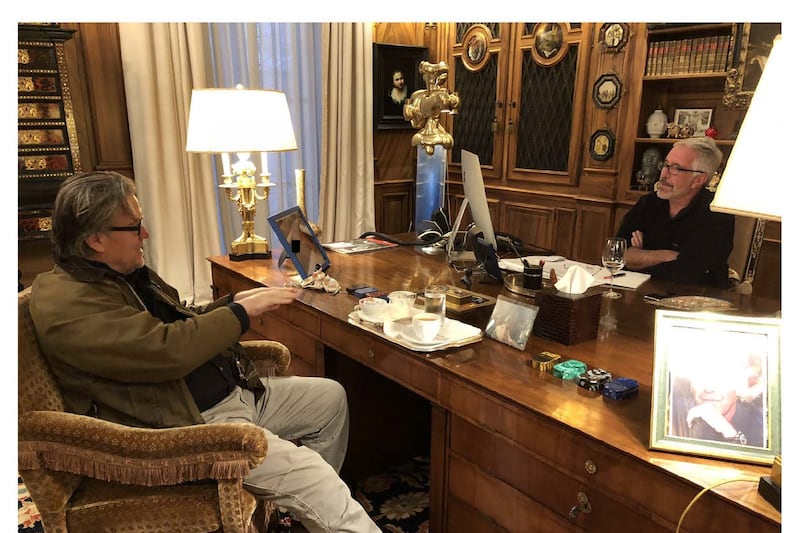Not that long ago Canary Wharf was the bustling symbol of London’s financial services boom, where big names in banking and law rubbed shoulders in gleaming high-rise towers. But the seismic shift to hybrid working has prompted some high-profile exits from the city’s eastern docklands as companies downsize their space to reflect new working patterns. This hasn’t happened here yet on any scale, but office environments are changing quite significantly, with major reconfiguring of existing spaces to better reflect how businesses now work.
Dropbox was one of the first organisations to announce it was going virtual-first, which means that remote working became the “primary experience” for all employees. This led to a rethink of the company’s traditional office layout. Dropbox offices became Dropbox studios redesigned for collaboration, social exchange and in-person teamwork. Larger conference rooms with more versatile layouts were built, flexible wall systems and movable furniture were installed, dedicated social space was created and the interior design prioritised more natural light and the use of neutral colours.
“As our international HQ, the Dublin Studio is a space where people can meet in-person, on average once a week, to collaborate with their colleagues and gather for team-building activities. It is not intended for solo work so there are no individual workstations,” says Laura Ryan, Dublin site lead and VP of the global HR business partners team.
Flexibility has been key to the Dublin Studio’s design (which is smaller than the company’s previous office space), and as an international hub it has facilities such as lockers for those travelling in from other locations. “This ability to continually adapt the studio is game-changing as it allows our employees to be really dynamic and thoughtful about in-person connection so they can get the most out of coming together,” says Ryan.
READ MORE
“We’ve also been providing ongoing education on how to be successful in living virtual first, and our Virtual First Toolkit, which is publicly available, provides employees and others interested in remote models of work with practical guides on how to connect with co-workers for team effectiveness and productivity.”
[ Companies wandering blindly in a world of hybrid workOpens in new window ]
Glenn Weafer is project manager with Globoserv, an Irish company specialising in commercial fit outs. “We deliver everything in the built environment, from the design and construction of small to large fitouts and everything in between,” he says. “When Covid hit first a lot of our work was reactive – putting in social distancing measures such as dividers and acrylic screens as quickly as possible. What we’re seeing now is a strong trend away from the linear office, with its static workstations, to more collaborative working spaces but with breakout areas where people can go to have quiet time or a private conversation. Spaces have to be easily adaptable for different uses, so desks are generally not hard-wired to a power source any more, while the traditional layout of desks with pedestals of drawers is gone, too, with the trend towards hot-desking.”
Weafer says the sky is the limit in terms of what companies can spend on a refit, but €200,000-€500,000 is not uncommon, with some spending up to a million and more for a premium refurb when other costs, such as the inclusion of leading-edge AV technology or the introduction of new sustainability features, are factored in. “Most requests are pretty standard,” says Weafer, “but we did have one where the company wanted to move away from central walkways in favour of a zigzag pattern because it created more face-to-face engagement between employees as they moved around.”
One of the most obvious impacts of Covid is that it forced a huge increase in laptops usage versus desktop PCs. This means a seamless plug-and-play approach
With more than 40 years in office interiors, equipment and workflow solutions behind him, Bizquip’s founder Jim Leyden has seen how technology, the arrival of multinationals with their “cool” offices, the trend towards “resimercial” spaces (creating a more home-like atmosphere at work) and now post-pandemic redesign have revolutionised how offices look and operate.
“Over the past two years there has been a huge crossover between workplace technology and interiors but one of the most obvious impacts of Covid is that it forced a huge increase in laptops usage versus desktop PCs. This means a seamless plug-and-play approach when people come into the office is critical to the success of an efficient and effective workspace now,” says Leyden. “We are also seeing a strong focus on health and wellbeing, with companies introducing electric sit-stand desks and creating breakout areas to encourage socialising in the office.”
Leyden adds that other changes Bizquip has overseen include creating new meeting rooms to cater for larger presentations to global teams, changing the mix of formal and informal seating and putting in smaller desks as people are using laptops rather than paper. Private booths for confidential exchanges have been added as has “agile” furniture (such as tables with folding tops to suit different uses) and integrated presentation screens and video-conferencing facilities.
“There is also a demand for systems that provide data on occupancy statistics for office space and car parks,” he says. “This allows companies to make better use of their space and maybe reduce their footprint. For example, if a bank of 12 desks is occupied 5 per cent of the time but the occupancy rate of a small meeting room is over 70 per cent during the same period, then we would recommend introducing an acoustic meeting pod or an additional informal meeting space as this would better meet the actual needs of the business.”


















